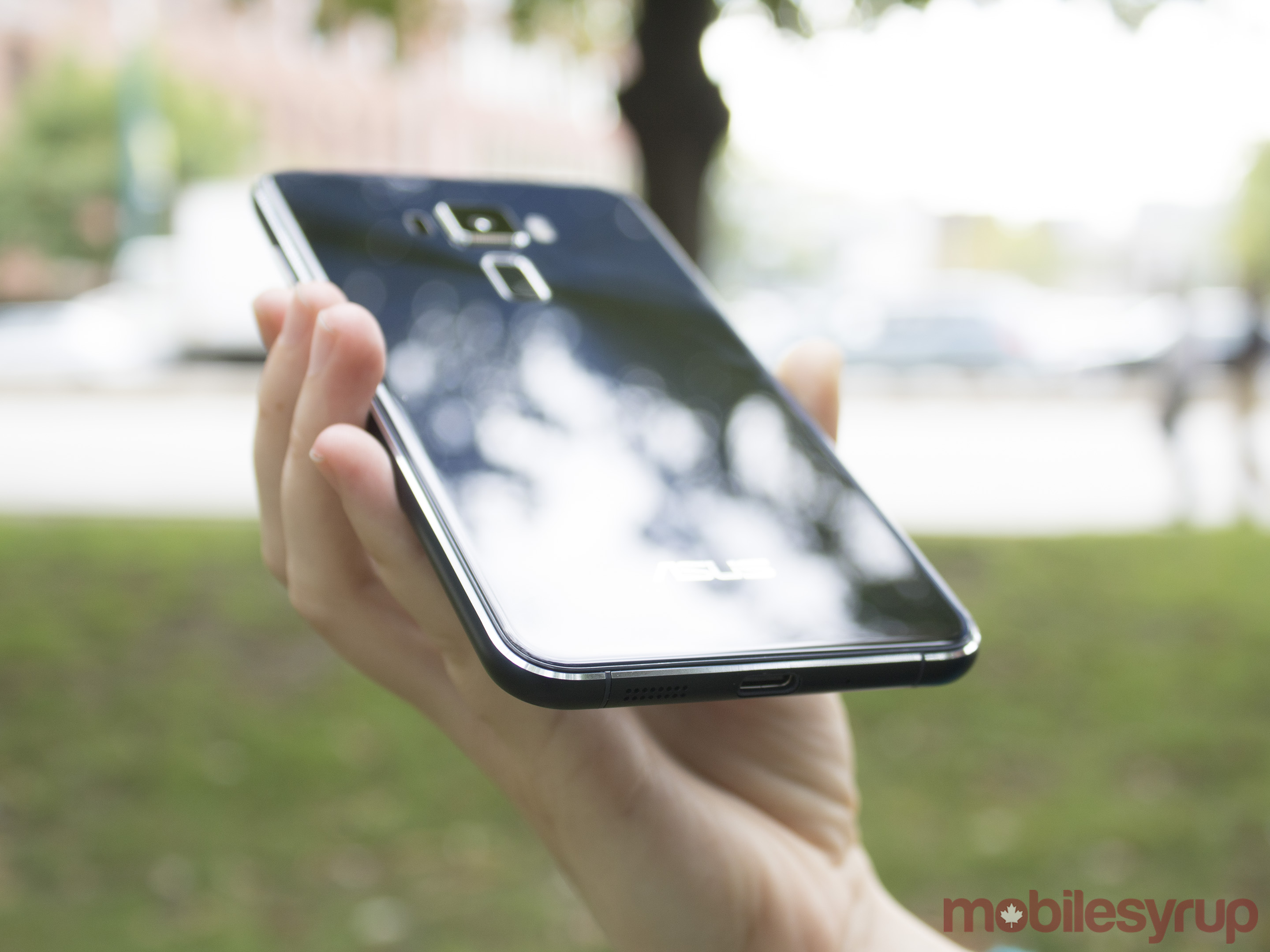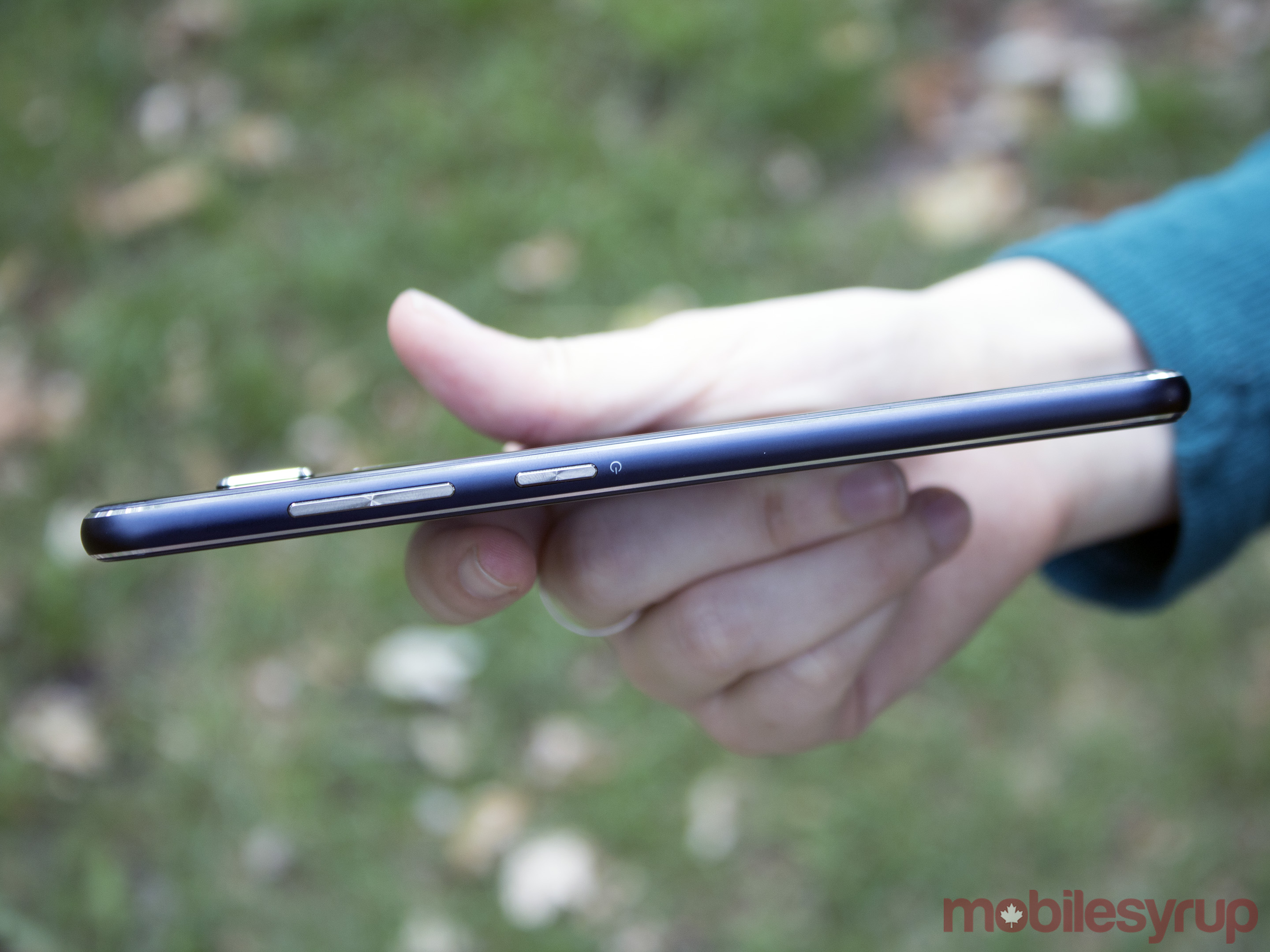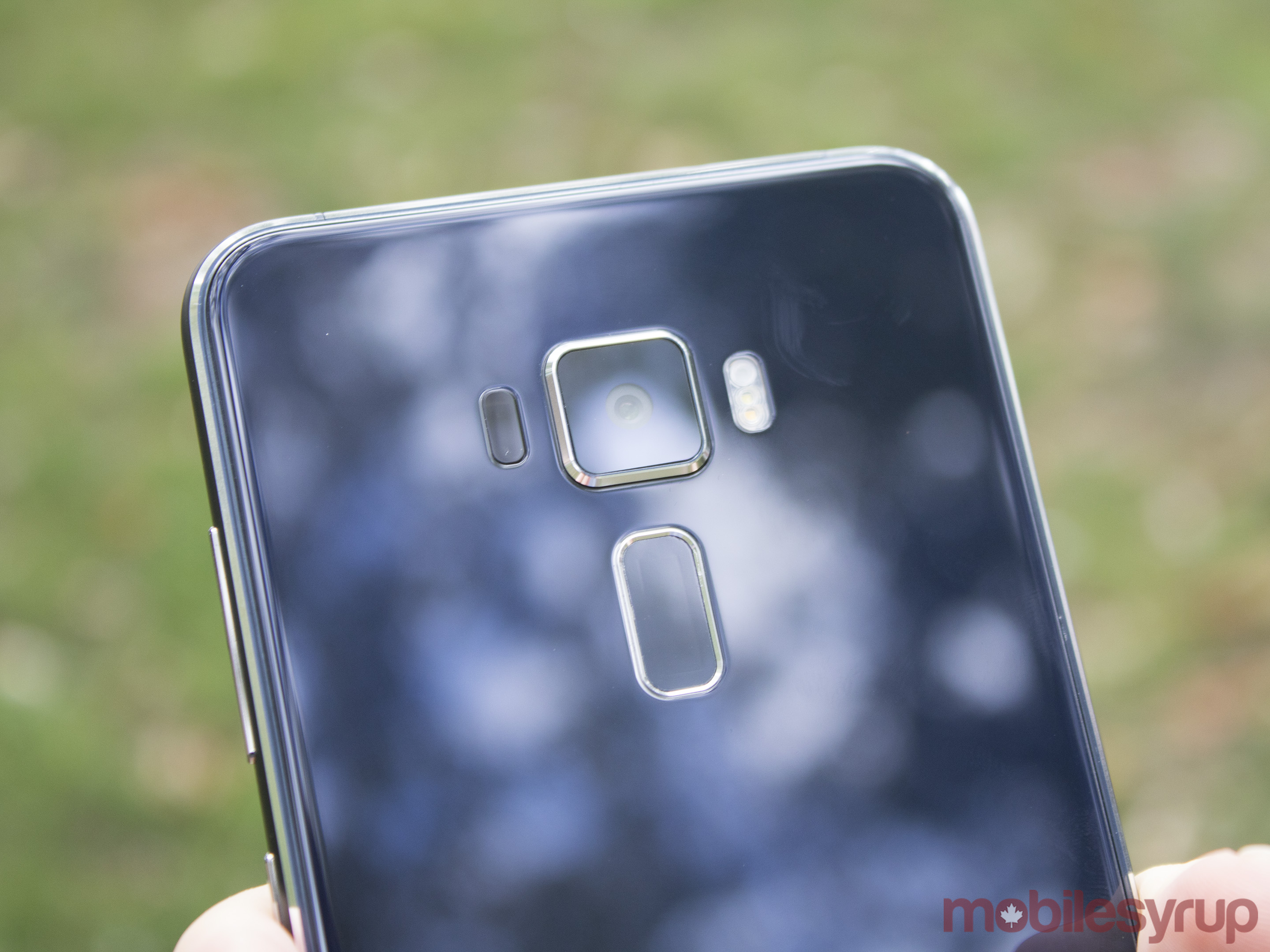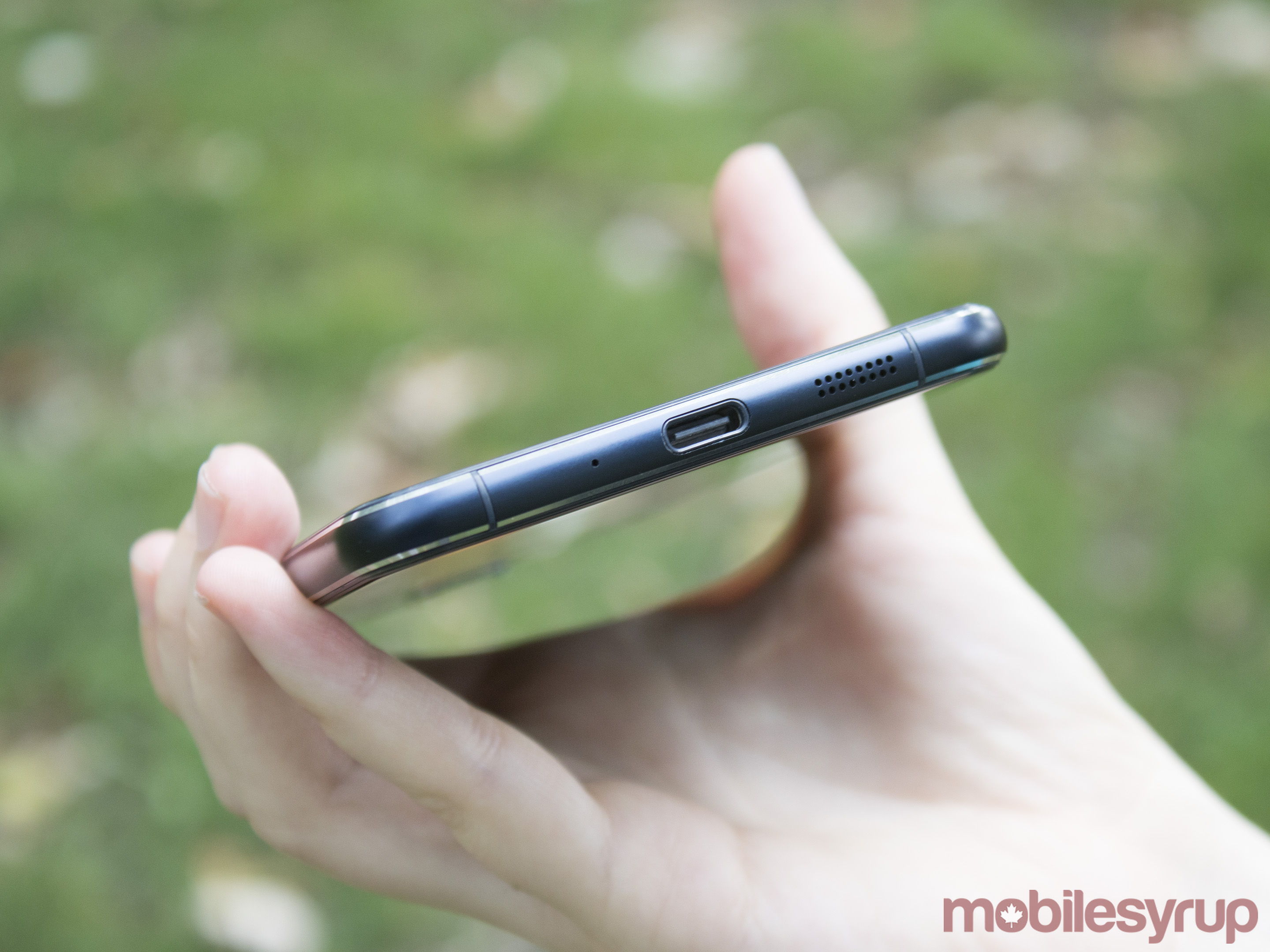
The Pros
- Excellent camera
- Long-lasting battery life
- Large internal storage
The Cons
- Too much bloatware
- Underwhelming processing power
- Bland design
I’ll admit it: I wasn’t expecting much from the Asus Zenfone 3.
Maybe it was everything I’d heard about the Zenfone 2’s bloatware, or maybe it was the phone’s rather unassuming appearance. Either way, I wasn’t exactly in a hurry to make it my new daily driver.
That mild prejudice was backed up during my first day of use by a frustrating amount of pre-installed software and a skin that I felt wasn’t intuitive — something common to cell phones that aren’t designed for a primarily North American audience.
But as I actually began to use the device’s core features, I was pleasantly surprised. The camera package the phone touts is indeed impressive and its battery life is outstanding, often lasting two days on one charge.
Despite its appearance and 625 processor, the Zenfone 3 is an exceedingly capable mid-range device, priced at around $430 CAD. But is it impressive enough to make a dent in a market that’s well-saturated even in Canada? I tested the handset for a little over two weeks to find out.
Specs
- Qualcomm Snapdragon 625 2GHz octa-core CPU
- Adreno 506 GPU
- 4GB RAM
- 64GB of internal storage (expandable up to 2TB)
- 3,000mAh non-removable battery
- USB-C charging
- Android 6.0.1 Marshmallow
- 152.59 x 77.38 x 7.69 mm
- 155g
- 5.5-inch 1920 x 1080 pixel IPS display
- 16-megapixel rear-facing camera with f/2.0 aperture
- 8-megapixel front-facing camera with f/2.0 aperture
- 3.5mm headphone jack
- Rear-facing fingerprint sensor
- Bands
Dull-looking despite the shine
As a person who cares about smartphone appearance, the design of the Asus Zenfone 3 is a major detractor. One of the only benefits that a rear-facing glass panel brings to a device is a premium look — yet it’s debatable as to whether the Zenfone 3 actually looks premium.
Its back panel lacks any sort of pattern that could help to obscure the inevitable fingerprint smudges and the rectangular rear fingerprint sensor, accentuated by a stark silver outline, looks awkwardly dissonant in size and length under the square camera bump. To top it all off, Asus’ outdated logo is prominently displayed in silver.
Having said that, the metallic outer rim lends the handset a bit of flair and the hardware features are positioned logically — something that can’t be said of all devices. The power button and volume rocker are tucked up at the top right side of the phone, the 3.5mm headphone jack is positioned at the top of the device and the USB-C charging port is at the bottom. On the left side of the Zenfone 3 is the port for SIM and memory cards, where you’ll have to choose between dual SIM use and adding a MicroSD.
To the left of the charging port is the phone’s five-magnet speaker which is loud and clear, but lacs depth and fell short in comparison to the ZTE Axon 7 and Moto Z Play. Listening to music through my wired Bose QC15 headphones was a similar experience. I noticed a certain flatness to the sound, but it wasn’t tinny, and the experience is unlikely to bother anyone but a true audiophile.
Additionally, the sound quality for phone calls was significantly better than on most Androids, allowing me to actually take calls in public. I never received any comments asking me to speak up, either, which speaks to the efficacy of the device’s dual internal mic.
Daylight-optimized with an ultra-slim bezel
Some of the device’s design deficit is made up for by the 5.5-inch 1920 x 1080 pixel IPS display with about 386 ppi density. It’s vibrant and crisp, performing well outdoors in direct sunlight. In the settings, Asus also provides a feature that allows you to cut blue-light, ideal for those who are worried about their mobile device disrupting their sleep patterns. Additionally, the lesser display spec likely contributes to the device’s fantastic battery life, which I’ll explore at more length below.
Surrounding the display is a thin bezel that allows the device to boast a 77.3 percent screen to body ratio. Overtop the display is 2.5D contoured Gorilla Glass 3.
As for how it feels, the phone gives off the impression of being somewhat thick and weighty, when in reality, it fares well in comparison to its competitors. At 155g, the Zenfone 3 weighs the same amount as the Moto G4 Plus, and is lighter than both the OnePlus 3 and ZTE Axon 7. It’s only 7.69mm, making it thicker than the OnePlus 3, but thinner than the G4 Plus and Axon 7.
Height and width measures in at 152.59 by 77.38mm, making it relatively shorter and wider than most of the competition, which likely contributes to the device’s chunky feeling.
Disappointingly average performance
The Zenfone 3 runs on a 14nm 64-bit Qualcomm octa-core Snapdragon 625 processor, clocked at up to 2GHz and built on ARM’s Cortex-A53 architecture. Backing that up is 4GB of RAM and an Adreno 506 graphics processing unit.
Altogether, that’s not a bad package, but ultimately the experience depends on whether the hardware is fully utilized. After two weeks of use, I found the Zenfone 3’s performance unimpressive, but not so poor that using it as my daily driver caused undue frustration. I had a handful of larger apps crash or refuse to load, some instances of overheating when using processing-intensive apps and occasional lag — though again, nothing that significantly deterred me from accomplishing what I needed to do. An interesting RAM self-management feature called Power & Boost frees memory with one click, something which was at the very least satisfying, even if it only made a minor difference.
It must be noted, however, that in comparison with the Moto Z Play, which also stocked the Snapdragon 625 chipset, the Motorola device came out feeling far zippier. Perhaps this has to do with bloatware, which the Zenfone certainly has in spades, or maybe it’s any range of technical design reasons — in any case, it’s clear that the 625 can be used to better effect.
When it comes to storage, the base model of Zenfone 3 comes with 64GB of space (11.3GB of which is reserved for the system) — more than enough for most people’s needs, and can be expanded up to 2TB, as long as you weren’t planning to use dual SIMs.
Designed for photography
The Zenfone 3’s 16-megapixel camera with f/2.0 aperture was what impressed me most about the handset. Going in, I wasn’t expecting to have one of my best experiences with a mobile camera to date — and yet that’s exactly what happened. It should be noted that I am not a hobbyist photographer, much less a professional, so an excellent mobile camera experience in my mind is one that is very easy. In my ideal world, I point, click and the photo comes out looking great. The Zenfone 3 delivers on that dream.
The camera launches promptly and there’s no shutter speed lag. In bright, sunny conditions, colours come through with surprising strength. In low light, the camera performs ably, retaining clarity with very little blur. If you have a moment to dip into the phone’s many modes, you can also use a low-light mode to effectively bump brightness and definition. In all lighting situations, I was shocked by the low level of blur when it came to shooting moving objects — including a small, very active ball of fur that appeared at the MobileSyrup offices. This perhaps indicates the importance of a fast shutter speed, as well as the inclusion of .03 second laser auto-focus and 4-axis optical image stabilization (OIS).
While I generally don’t venture into camera modes much apart from reviews, I found the Zenfone 3’s options so compelling that I couldn’t help but make use of them. To begin with, there’s a GIF mode, a high-quality depth of field mode and a child mode that snaps pictures as soon as it recognizes small faces smiling at the camera.
Other handy modes include super-resolution (which bumps resolution by 4x), panorama, time rewind and time lapse — all of which lived up to their potential with clear, bright pictures.
Additionally, the rear camera is capable of capturing 4K video with 3-axis electronic image stabilization (EIS). From my testing video required a fair amount of re-focusing but still yielded incredibly crisp footage. Asus also added a simple but welcome feature to video capture — you can easily click the camera button to take stills at any point while shooting.
As for the front-facing camera, it’s an 8-megapixel shooter with a f/2.0 aperture. While it features a less expansive list of modes, there are still quite a few to choose from, including selfie panorama, low light, time lapse and gif animation. Starting a self-timer is easily done, with a swipe up of the camera button that starts the countdown. Just like the rear-facing camera, the selfies were of the same great quality, even managing to make the beautification mode common to Androids look a little more realistic than most.
Beast mode at 3,000mAh
Apart from camera performance, the other major selling point for this device is its battery life. I’d categorize myself as a moderate to heavy mobile user, consistently utilizing data to stream multiple hours of music or browse the internet on a daily basis. Performing under that use case, the Zenfone 3 generally lasted me two days per charge. In many instances, I found it lasted a little longer on the second day than my previous device, the Moto Z Play — which itself was notable for its battery life.
This was particularly impressive because the Zenfone 3 only stocks a 3,000mAh battery, a size that doesn’t guarantee endurance. For example, the Moto G4 Plus and OnePlus 3 contain the same size of battery, and both get an average of one day of battery life. Of course, this has much to do with the kind of chipset that’s sipping that power. This excuses the OnePlus 3, but not the Moto G4 Plus, which ran on a lowly Snapdragon 617 SoC.
While I was impressed with the battery life, I was nervous about how hot the device became when plugged in to charge. It’s extremely uncomfortable in the hand, but thankfully the stats reveal it generally only reaches about 37 degrees Celsius. From my experience, that’s certainly not on the higher end of heat ranges and shouldn’t degrade the non-removable battery too quickly over time. Additionally, it takes charges quickly, generally getting to 100 percent within an hour and a half.
The attack of the unnecessary apps
Now we come to the user interface and Asus’ predilection for unfortunate bloatware. Along with the design, it’s certainly one of the less pleasant aspects of what could otherwise be a fairly respectable mid-range phone.
Out of the box, the device runs Android 6.0 with Asus’ ZenUI 3.0 skin layered overtop, bringing with it more bloatware apps than I’ve ever witnessed on an Android device — though it’s been noted by those who used the Zenfone 2 that the offerings are actually significantly pared back. The main downside of the overwhelming amount of software features is that it’s very difficult to find things at first, hidden as they are amongst some of the more ridiculous-seeming offerings — such as a Zenfone chat app.
Altogether, however, it wasn’t a much different experience from the ZTE Axon 7, also a device not necessarily designed with North Americans in mind. It was awkward to get used to, but certainly not a deal-breaker considering some of the stand-out attributes of the Zenfone 3.
One perhaps more pressing issue when it comes to software is the question of Android updates. I’ve reached out to Asus regarding their commitments when it comes to monthly security patches and version updates, but haven’t received a response yet. What we do know is that the Zenfone 2 received Marshmallow in August, 2016, about 10 months after it was officially released — which is not exactly a speedy delivery. Only time will tell whether the Zenfone 3 will fare better.
The mid-range device to recommend?
The Zenfone 3 is far from a flawless device -- it looks outdated and bland, it's got a skin filled with bloatware and its performance is nothing to write home about. However, in the areas where it excels, it truly makes its mark.
The device's camera has created a new benchmark for quality in my mind that, quite frankly, extends past mid-range devices to contend with many top-tier devices on the market today. It also has two-day battery life, something not many smartphones anywhere on the price spectrum can brag.
Those two aspects are key differentiators when it comes to the many mid-range Androids on the market. The question is, are they worth dealing with a middling performance and less-than-intuitive UI? The answer will ultimately depend on the individual, but for myself, it's a no. I want smoothness and speed in my daily driver. While I'll be sad to leave behind such a stellar camera, it's a sacrifice I'm willing to make. For those who love taking pictures and are constantly on the go -- this could be the ideal mid-range smartphone.
Considering how much I've enjoyed certain aspects of the Zenfone 3, however, there's a good chance that I'll fall in love with the Zenfone 3 Deluxe, coming to Canada in early November for $669 (only about $240 more). The Deluxe features a 5.7-inch display, Snapdragon 820 processor and 6GB of RAM, paired with the same 3,000mAh battery. A review of the Deluxe will follow in the next several weeks.
Patrick O'Rourke contributed photography to this review.
"The Zenfone 3 is far from a flawless device -- it looks outdated and bland, it's got a skin filled with bloatware and its performance is nothing to write home about"
MobileSyrup may earn a commission from purchases made via our links, which helps fund the journalism we provide free on our website. These links do not influence our editorial content. Support us here.








